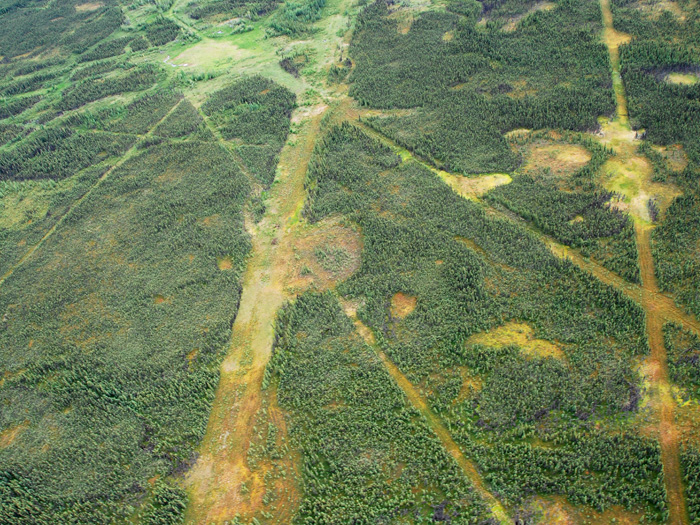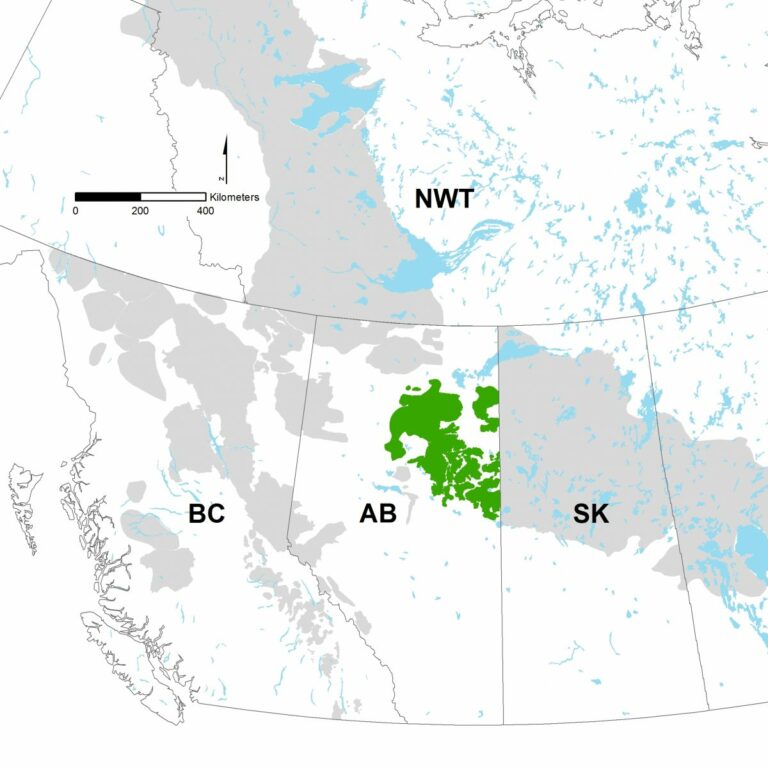Habitat loss is a leading threat to many species at risk, sparking the need for widespread and effective habitat protection and restoration. The critical habitat of caribou, a species in decline across western Canada, overlaps with areas of significant resource potential for both forestry and energy sectors. As such, there are immense social, political, and financial trade-offs associated with habitat protection.

Self-sustaining caribou populations require large areas of intact habitat, which will require not only protection, but large-scale restoration of already disturbed habitat – an expensive and time consuming endeavour. Strategic, systematic, and adaptive means of ranking where and when these measures are implemented is imperative for effectively allocating resources where conservation efforts are most likely to succeed. The Wildlife Science Centre has worked with industry and government to build frameworks and interactive tools to support prioritising habitat protection and restoration efforts.
Prioritizing protection across sub-populations
Prioritizing actions that have the highest change of success is an important part of effective conservation for wide-ranging species. Our team has developed a simple algorithm for Southern Mountain Caribou that integrates scaled habitat quality measures and population characteristics to rank subpopulations by their relative conservation status. This helps identify areas where additional conservation efforts are most likely to make a difference and contribute to long-term species persistence. Our transparent method allows for potential changes in criteria values, scaling, or weighting, providing a baseline metric for conservation discussion and adaptive management action.
This web-based application can be used for other species, making it an invaluable tool for conservation scientists and managers to maximize long-term conservation impact.
https://biodiversity-pathways.shinyapps.io/interpopulation-prioritization/
Prioritizing restoration within sub-populations
Within the boreal forests of Alberta, the exploration and extraction of oil and gas reserves have created hundreds of thousands of kilometres of linear features. These cutlines through the forest are used by predators to hunt more effectively and increase predator use of caribou habitat. Many of these features are no longer being used for energy development, yet natural regeneration remains stagnant, sparking the need for active restoration treatments to return forest cover and reduce predator use. However, only a fraction of these linear features are restored each year. There is a need to prioritize efforts.
In collaboration with Canada’s Oil Sands Innovation Alliance (COSIA) and a multi-stakeholder committee, we developed a framework to support habitat restoration prioritization across caribou ranges in northeastern Alberta. There are six components of the framework, that ultimately ranked landscape units into five zones of restoration priority:
(1) Identify landscape units in which to prioritize restoration
(2) calculate the benefit of restoration
(3) calculate the cost of restoration
(4) incorporate additional weighting criteria
(5) calculated the weighted gain per cost for each landscape unit
(6) group units into ranked zones from highest to lowest weighed-gain-per-cost
We also used the framework to predict and monitor progress towards restoration goals. The largest gain in unaltered habitat occurred after restoration of the highest priority zones, with diminishing returns as restoration proceeded. Despite assuming all conventional seismic lines outside of energy project boundaries were restored, none of these caribou ranges reached habitat management targets set out by the federal government.
These results highlight the need for ambitious, coordinated restoration, and the need for improved land-use planning to minimize habitat alteration within caribou ranges.
